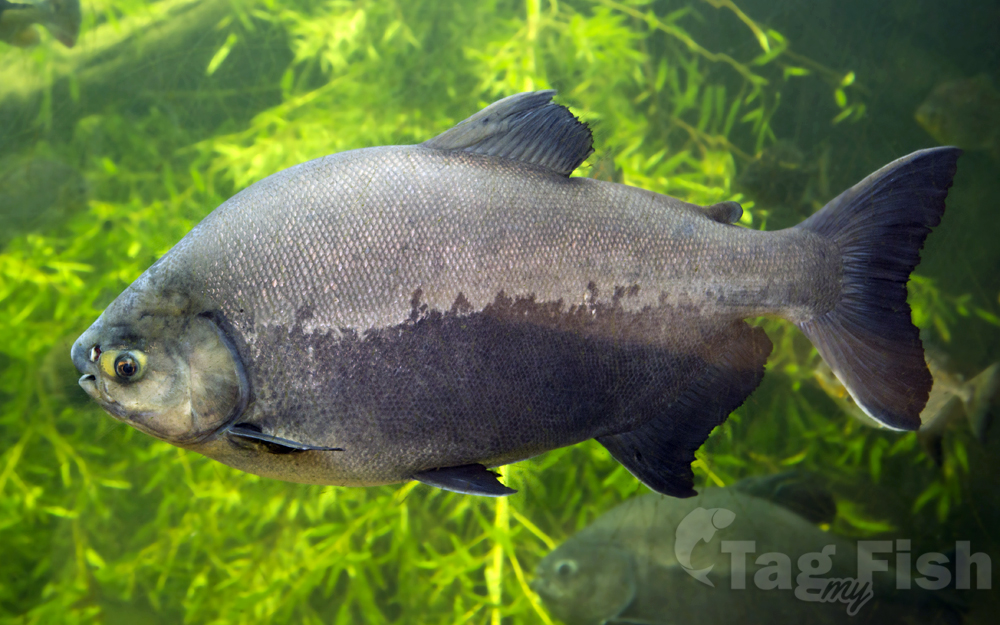Black pacu
(Colossoma macropomum)

Classification
General data
The tambaqui (Colossoma macropomum) is a large species of freshwater fish in the family Serrasalmidae. It is native to tropical South America, but kept in aquaculture and introduced elsewhere. It is also known by the names black pacu, black-finned pacu, giant pacu, cachama, gamitana, and sometimes as pacu (a name used for several other related species).
The tambaqui is currently the only member of Colossoma, but the Piaractus species were also included in this genus in the past.
Distribution
The tambaqui is native to freshwater habitats in the Amazon and Orinoco basins of tropical South America. In nutrient-rich whitewater rivers such as the Madeira, Juruá, Putumayo (Içá) and Purus it ranges throughout, all the way up to their headwaters. In nutrient-poor blackwater rivers such as the Rio Negro and clearwater rivers such as several rightbank tributaries of the Madeira it generally only occurs in the lower c. 300 km (200 mi) and is rare beyond the lowermost c. 150 km (100 mi).
It is widely kept in aquaculture outside its native range in South America. Miocene fossils are known from the Magdalena River, but modern occurrence in this river is due to introductions by humans.
Description
The tambaqui is the heaviest characin in the Americas (the lighter Salminus can grow longer) and the second heaviest scaled freshwater fish in South America (after the arapaima). It can reach up to 1.1 m (3.6 ft) in total length and 44 kg (97 lb) in weight, but a more typical size is 0.7 m (2.3 ft). The largest caught by rod-and-reel and recognized by IGFA weighed 32.4 kg (71 lb). After the flood season, around 10% of a tambaqui\\\\\\\\\\\\\\\'s weight is the visceral fat reserves and at least another 5% is fat found in the head and muscles.
It is similar in shape to the piranha and juveniles are sometimes confused with the carnivorous fish; the tambaqui is tall and laterally compressed with large eyes and a slightly arched back. Unlike more predatory species, the teeth of the tambaqui are molar-like, an adaption for crushing plant seeds and nuts.
The lower half of its body is typically mainly blackish. The remaining is mainly gray, yellowish or olive, but the exact hue varies considerably and depends in part on habitat with individuals in blackwater being much darker than individuals from whitewater. The pelvic, anal and small pectoral fins are black. The tambaqui resembles the pirapitinga (Piaractus brachypomus), but the latter species has a more rounded head profile (less elongated and pointed) and a smaller adipose fin that lacks rays, as well as differences in teeth and operculum.
Hybrids between the tambaqui and the similar Piaractus (both species) have been produced in aquaculture, and are occasionally seen in the wild. The hybrid offspring can be difficult to identify by appearance alone.











